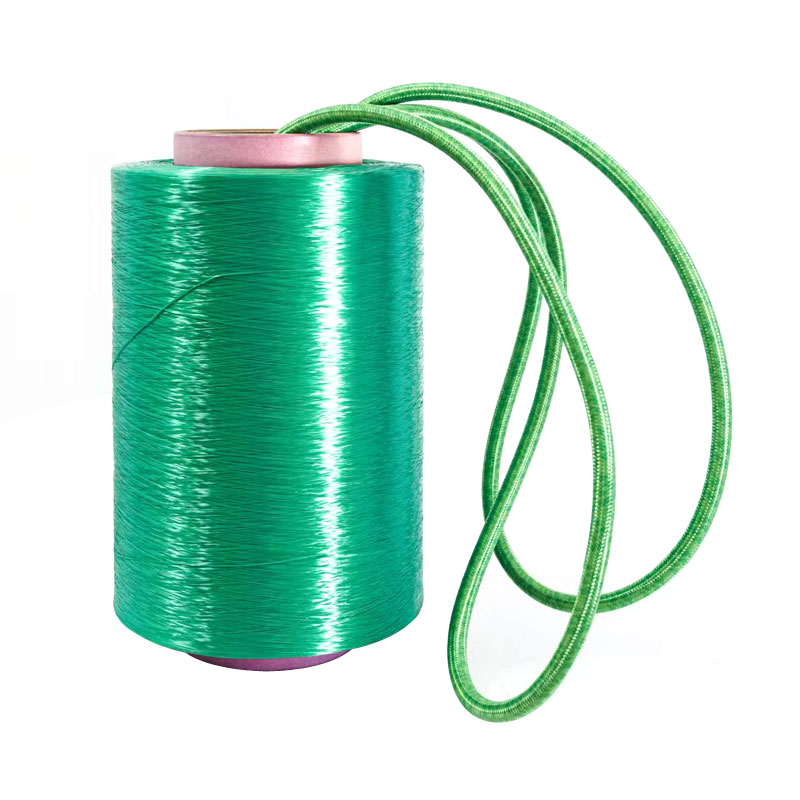
- English
- Español
- Português
- русский
- Français
- 日本語
- Deutsch
- tiếng Việt
- Italiano
- Nederlands
- ภาษาไทย
- Polski
- 한국어
- Svenska
- magyar
- Malay
- বাংলা ভাষার
- Dansk
- Suomi
- हिन्दी
- Pilipino
- Türkçe
- Gaeilge
- العربية
- Indonesia
- Norsk
- تمل
- český
- ελληνικά
- український
- Javanese
- فارسی
- தமிழ்
- తెలుగు
- नेपाली
- Burmese
- български
- ລາວ
- Latine
- Қазақша
- Euskal
- Azərbaycan
- Slovenský jazyk
- Македонски
- Lietuvos
- Eesti Keel
- Română
- Slovenski
- मराठी
- Srpski језик
Nylon and Polyester Filament Yarns: Properties, Applications, and a Selection Guide
Polyester and nylon are two synthetic fibers widely used in textiles and industry. While each has its own unique characteristics, they also share some similarities. Understanding their relationship can help us better select and apply these fibers. In some cases, they can be substituted for each other. The specific differences lie not only in their basic properties but also in their actual functions in specific environments.

Environmental Exposure and Weathering Resistance of Nylon and Polyester Yarns
Nylon breaks down faster and degrades more rapidly under UV exposure than polyester. Outdoor materials require yarns that can withstand harsh weather conditions and possess properties such as UV resistance, high strength, abrasion resistance, mildew resistance, and even saltwater resistance to extend their service life. Polyester is the most commonly used yarn in outdoor applications. Polyester fiber is naturally UV-resistant, making it recommended for a variety of outdoor uses, such as cushions, upholstery, sails, canvas covers, boat covers, awnings, tents, tarpaulins, geotextiles, and all outdoor applications.
Nylon absorbs moisture more readily than polyester (nylon has a moisture regain of approximately 4% compared to polyester's 0.4%) and stretches approximately 3.5% of its original length when wet, making it a preferred material for tents.
For indoor applications, UV resistance becomes less important, while strength, abrasion resistance, and stretch become more important. Nylon offers greater elasticity and abrasion resistance than polyester, and its excellent stretch and recovery properties make it a preferred choice for high-load materials such as upholstery materials and yarns, as well as carpets and other artificial surfaces. However, while nylon exhibits excellent resistance to hydrocarbons (gasoline, kerosene, and diesel), oils, detergents, and alkalis, it is susceptible to attack by oxidants, organic acids, hot inorganic acids, and aromatic alcohols. Nylon also dissolves and partially decomposes in concentrated hydrochloric, sulfuric, and nitric acid solutions and is soluble in formic acid.
Comparing Nylon and Polyester Yarn Strength and Tenacity
Polyester and nylon multifilament yarns have similar denier or size. To maximize their end-use potential, they can be combined and twisted into a variety of industrial yarns or sewing threads. Nylon sewing thread has a higher strength-to-linear density ratio (tenacity) than polyester. Tenacity is typically expressed in grams per denier (gpd), with high-tenacity (HT) polyester typically having 9.0 gpd and nylon 6,6 having 10.0 gpd. Therefore, if strength alone is the only consideration, nylon appears to be the best choice.
Processing Considerations for Nylon and Polyester Yarns
Nylon thread is easier to dye than polyester thread, and most dye migration issues are associated with polyester, especially in darker shades. Solution-dyed polyester offers advantages over package-dyed yarn. Nylon tends to yellow more easily when exposed to temperatures ≥ 150°C for extended periods, while polyester tends to retain its brighter colors. High temperatures affect nylon and polyester similarly, maintaining stability around 228°C and melting around 260°C. However, nylon is more difficult to recycle than polyester. While polyester recycling methods are numerous, nylon recycling methods are limited. Nylon decomposes into toxic and hazardous substances when melted, making it more expensive to recycle.
Polyester is naturally stain-resistant, requires no added chemicals, and is more cost-effective than nylon.
Cost of Nylon and Polyester Yarn
Multifilament nylon costs significantly more than polyester of equivalent denier, in some cases up to 2.5 times more. Therefore, when physical and chemical requirements are similar or not a concern, polyester should be considered in lieu of nylon. The specific choice depends on the specific situation and the specific material used.


